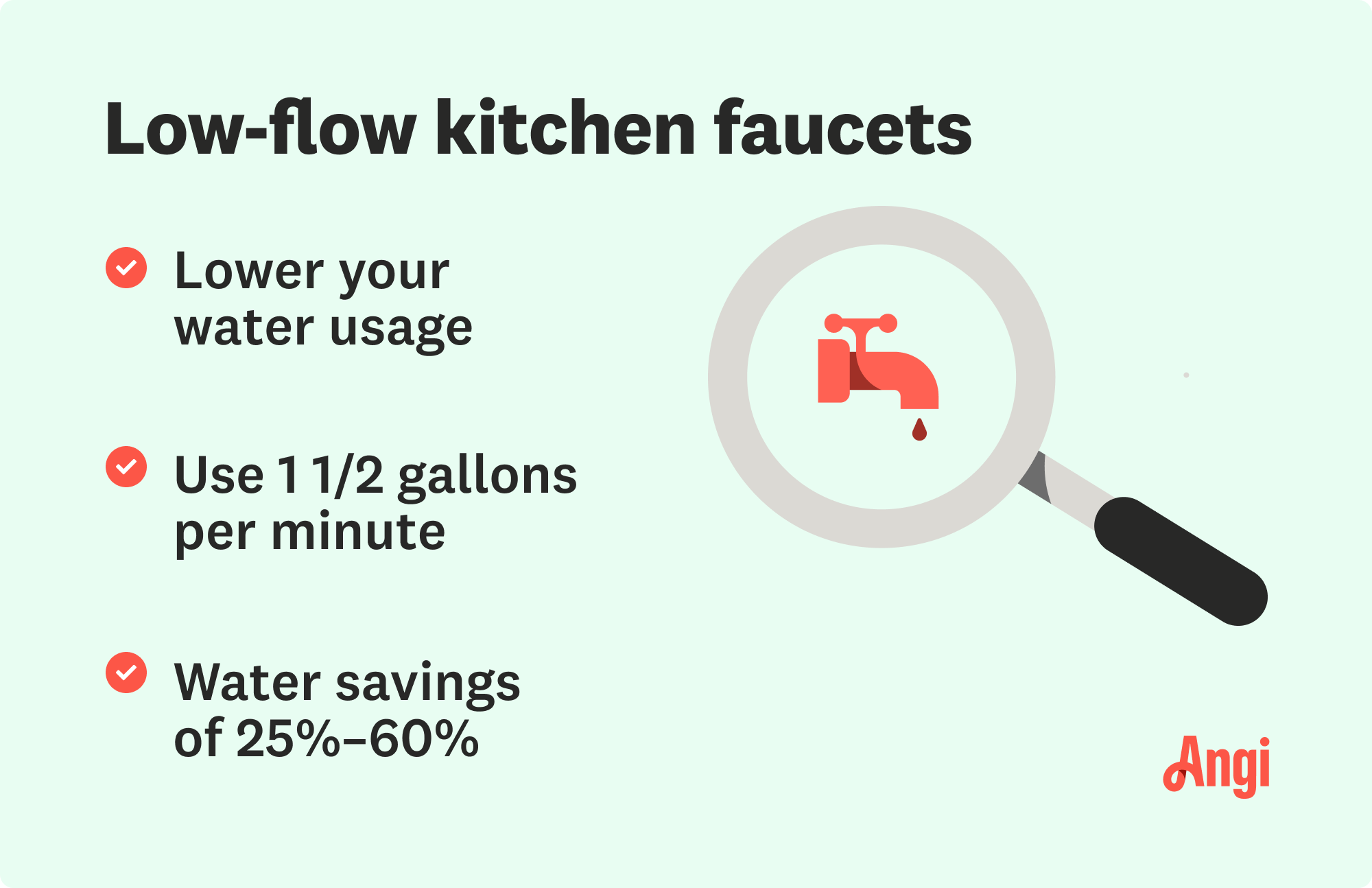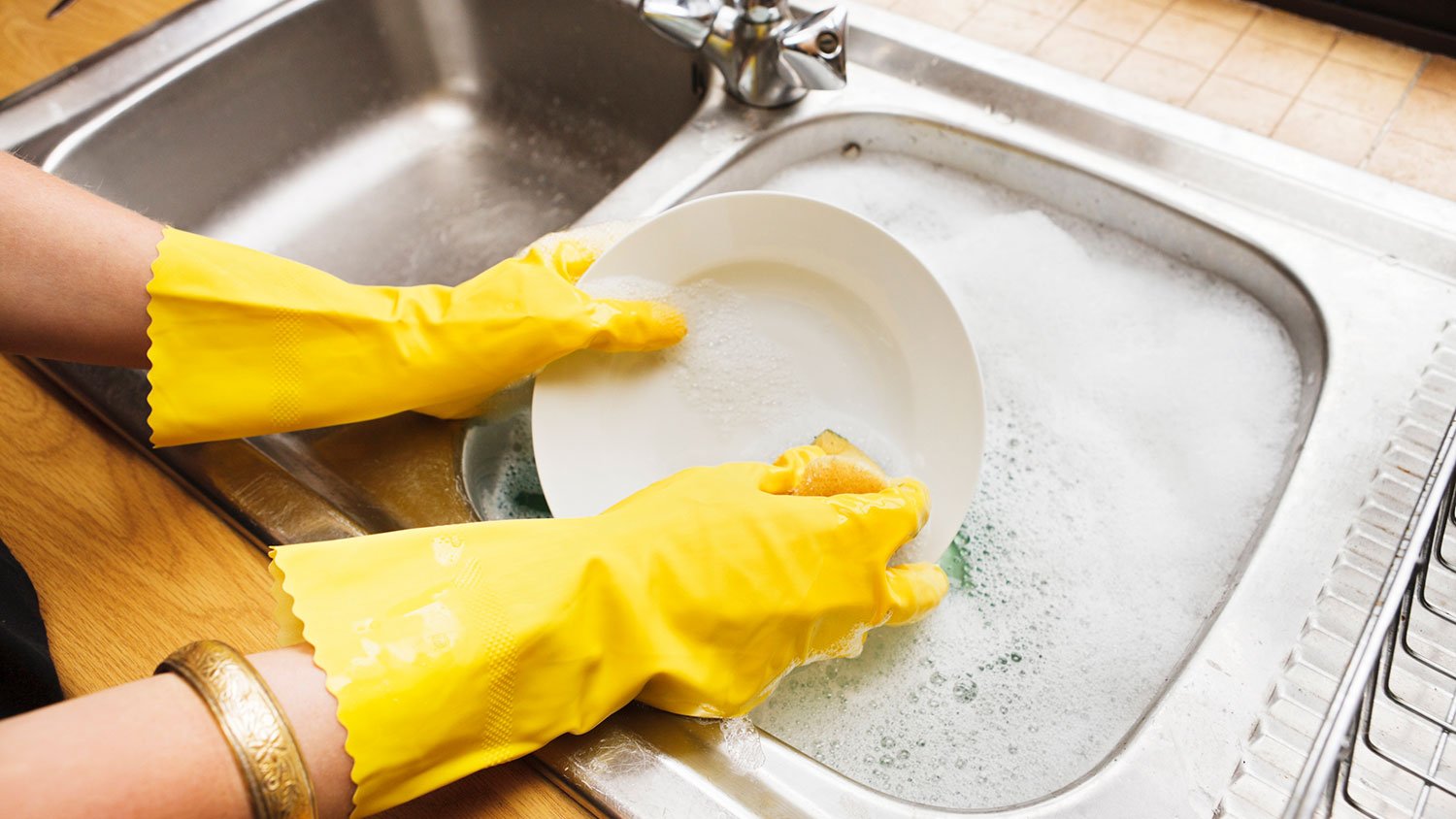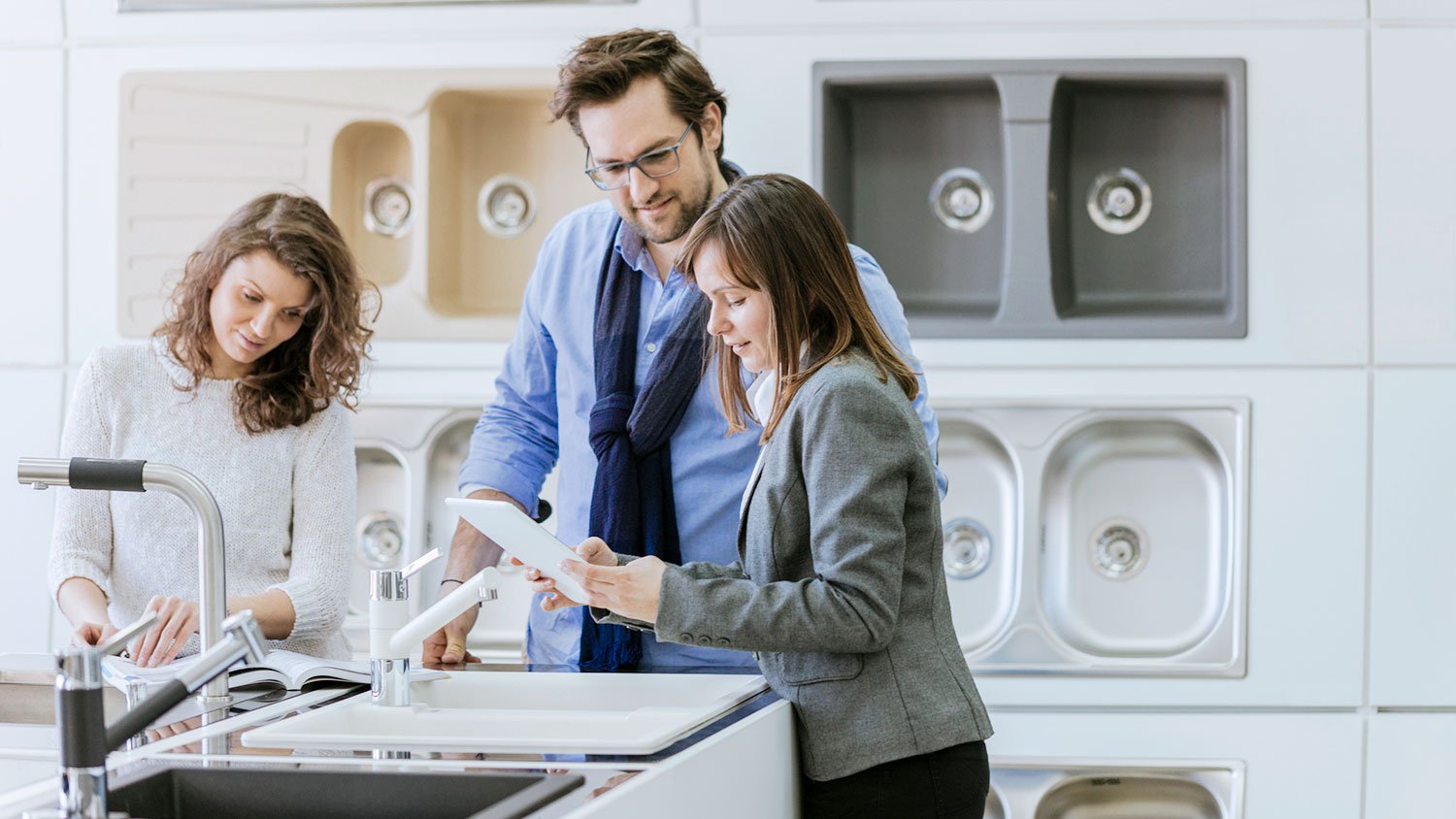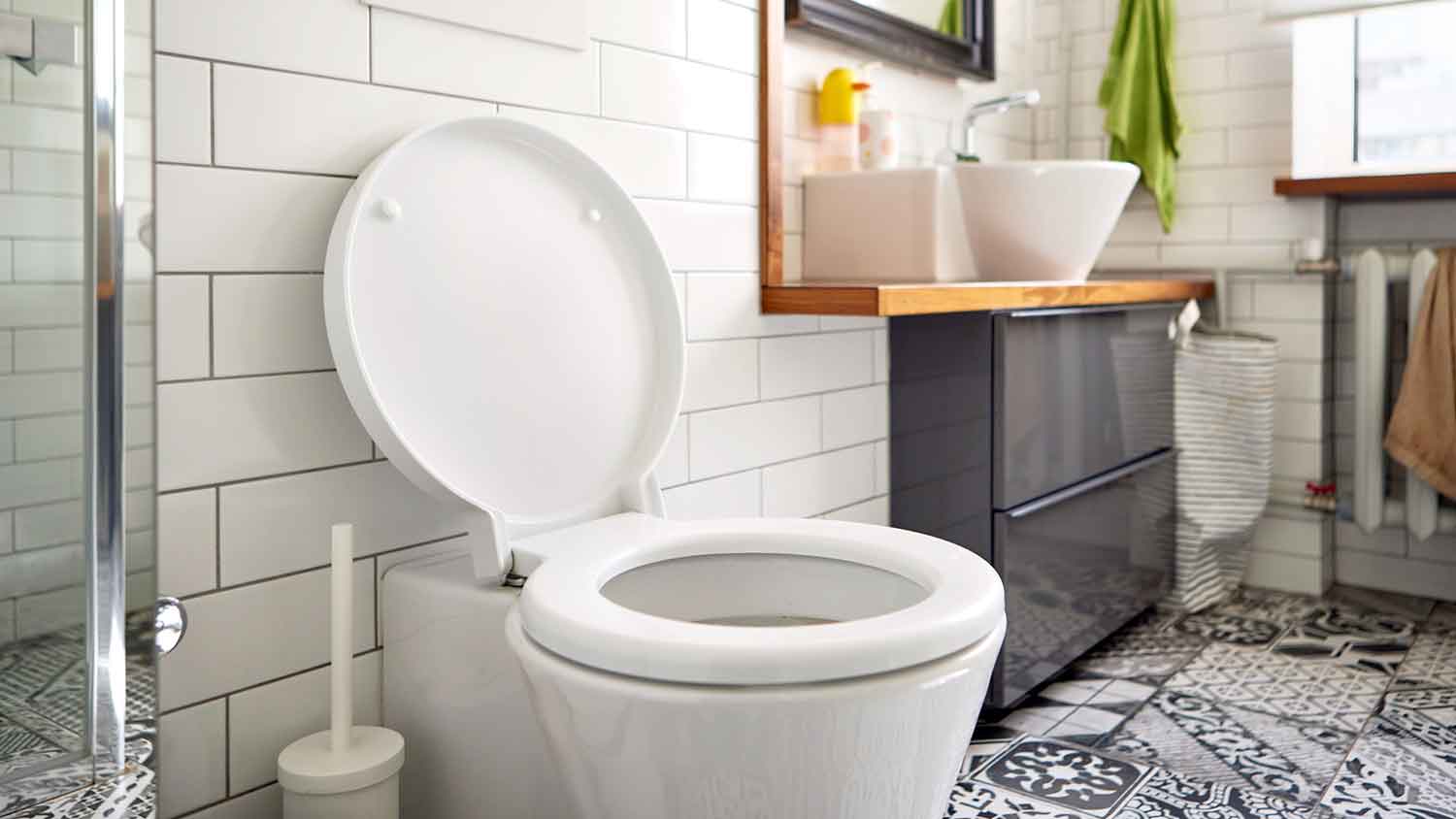9 Tips for Saving Water With Low-Flow Kitchen Faucets
Save water in style with low-flow kitchen faucets


Most people jump straight to the fun stuff during a kitchen remodel—paint color, lighting, appliances, cabinetry, and accessories. They certainly don’t think “low-flow kitchen faucet design.” However, water conservation is now a major area of interest in kitchen and bathroom design.
Regardless of how you’ve approached remodels in the past, focus on what you can do from here on out to save water. Here are nine tips for saving water in your kitchen.
1. Install a Low-Flow Kitchen Faucet

One simple yet effective way to save water in your kitchen is by installing a low-flow faucet. These fixtures decrease water flow moving through the faucet, helping lower your total water usage. Though the term “low-flow” is a loose definition, all faucets on the market since 1994 must have rates that are 2 1/2 gallons per minute or less. So if your house is older, you could have a high-flow faucet.
For a high-efficiency faucet, look for one with a flow rate of 1 1/2 gallons per minute. According to the U.S. Department of Energy, these ultra low-flow fixtures can achieve water savings of up to 25% to 60%.
2. Opt for a Water-Saving Sink Design

If you have to fill up a large basin—like in a farmhouse-style sink, for example—you’re using a lot of extra water when you wash dishes. If you have a shallow sink, you could be splashing, and therefore wasting, water. Instead, opt for a compartment sink where you can fill just one side to wash dishes.
A deep sink will allow you to keep water in the sink instead of on the counter, and you can choose how much you want to fill it.
Though there is a smattering of high-tech sinks available, with a little knowledge, you don’t need to go beyond the basics to be water conscious.
3. Fix Drippy, Leaky Faucets
Dripping or leaking sinks and faucets can waste a lot of water over time. Fixing household water leaks can save homeowners about 10% on their water bills, according to the Environmental Protection Agency (EPA). Examining your winter water usage is a good method to check for leaks. For example, if the water used for a family of four exceeds 12,000 gallons per month, chances are there’s a serious leak.
4. Manage Flow With a Tap Aerator
If you’re not in the market to change your water fixtures just yet, you can add or replace aerators in your faucets to slow the flow rate of water and save water and money. They aren’t applicable in every situation, but they can usually help you cut down water consumption in a residential home until it’s time to buy new fixtures.
An aerator adds air to the water stream with its mesh screen, helping to increase the number of streams coming out of your faucet and decrease splashing. This option is a great alternative to an ultra low-flow tap, which can end up making you leave the tap on longer to compensate for low-water pressure in your kitchen sink.
You can simply replace a built-in aerator in your faucet or pop on an attachment, depending on your current setup, and whoosh—you’ve reduced your faucet’s water volume.
5. Get Your Family Involved
Getting your family involved in a kitchen remodel can benefit you in many ways. It will help your children and family members understand the decisions behind sustainable design. It also helps them take ownership of their home and creates the desire to take care of it.
Make it fun for the kids with water trivia. Applying water conservation to everyday life helps them start to understand why it’s such an important issue. It also empowers your children to share their knowledge in class when studying things like Earth Day or coming up with a science fair project.
6. Install WaterSense-Labeled Products

The EPA created the WaterSense program to show consumers which products meet the EPA's water-saving standards. It states that if 10% of households installed WaterSense-labeled products, we’d save 6 billion gallons of water a year and more than $50 million in energy costs to supply, heat, and treat that water.
It can be easy to make a quick decision based on a product’s looks and reviews, but imagine if we all did our part to pull this off! Think of it as a cool talking point when giving tours of your remodel, and let your kids have a scavenger hunt to find the WaterSense labels when you're shopping.
For a product like a water-saving faucet to qualify as eligible for the WaterSense label, it must undergo testing and meet the EPA's water-saving standards, which include:
Certification from independent third parties licensed by the EPA
Better performance than standard models
20% increase in water efficiency (compared to standard models)
Provide cost-effective options to consumers to the extent possible
Measurable water-saving capabilities (water used and water use avoided)
7. Start With Water-Saving Needs, but End With Fun
I often tell my clients that we have to focus on what can be perceived as the “un-fun” part first. Great design is pointless if it doesn’t make your life easier and better. So after narrowing your search to water-saving kitchen faucets, you can focus on the fun sinks out there. Check out the fabulous trends taking place in sink design.
8. Consider the Time and Place
My design advice comes to you with good intentions—after all, you could save $50 to $100 per year on your water and water-heating bills by just switching to a low-flow kitchen fixture. You’ll always know what’s best for you in your remodel. As a designer, I know sometimes we make choices based on what fits our current situation.
If your kitchen faucet installation requires any plumbing modifications, you’ll need to hire a licensed local plumber for the job. The labor cost for kitchen faucet installation typically ranges from $260 to $480.
Keep these tips in mind next time you’re staring at a wall of sinks, covered in drywall dust, and tired from spending your free time remodeling a kitchen (but loving every minute of it).
9. Expand to Saving Water Outside of the Kitchen
We started this discussion by talking about the kitchen sink, but remember, it doesn’t stop there. Take a look at your irrigation, home toilets, and shower. A toilet alone can use up to 6 gallons of water per flush. In contrast, low-flow toilets only use about 1 1/2 gallons per flush. You can be the one to start that conversation with your contractors, and you'll be amazed at how others will follow your lead.





- Gas Plumbers
- Plumbing Repairs
- Sump Pump Installation
- Wood & Pellet Stove Repair
- Shower Repair
- Wood Stove Services
- Emergency Plumbers
- Fire Sprinkler Contractors
- Perc Test Companies
- Toilet Repair & Installation
- Boiler Repair
- Sewer Line Repair
- Faucet Repair
- Main Drain Camera Companies
- Foundation Drain Installation
- French Drains
- Bathtub Replacement
- Subcontractors
- Storm Drain Contractors
- Affordable Plumbing
- Plumbing & Heating Companies
- Bathroom Repair Services
- Sink Installation
- Commercial Plumber
- Barndominium Builders
- Water Line Repair
- Faucet Installation
- Water Line Installation
- Leak Detection
- 9 Foolproof Water Conservation Tricks to Help You Save Money
- All the Parts of Kitchen Sink Plumbing You Need to Know
- How to Replace Your Kitchen Faucet: A Complete DIY Guide
- How to Reduce Sewer Bills: 12 Easy Ways to Save Big
- 9 Potential Reasons Cold Water Isn’t Coming out of Your Faucet
- Kitchen Flooding? Here's How to Get Out of Hot Water Fast
- No Water Coming Out of Your Faucets? Here’s Why and What to Do About It
- Get To Know the Parts of a Sink Faucet
- 18 Common Plumbing Problems and How to Resolve Them
- How Long Do Bathroom Faucets Last?










